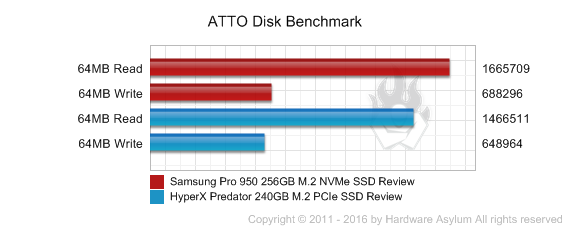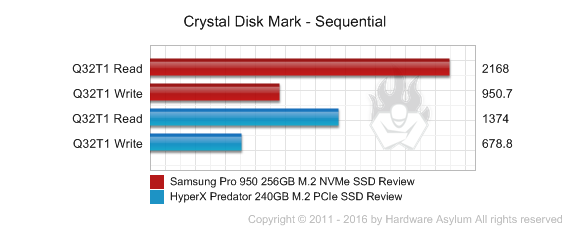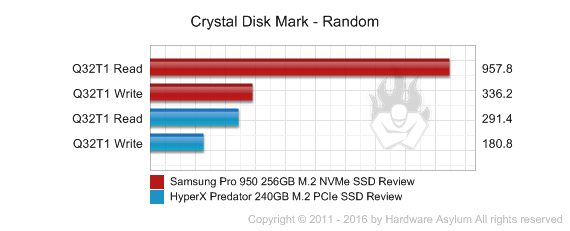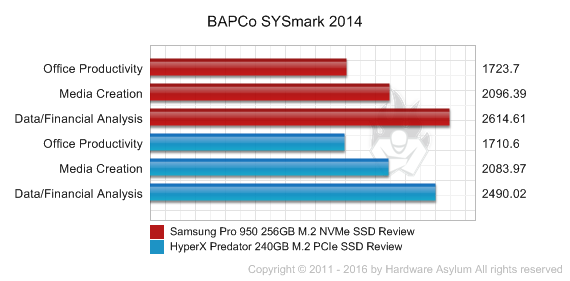Samsung Pro 950 256GB M.2 NVMe SSD Review
Author: Dennis GarciaBenchmarks
Sandra is a software collection of synthetic benchmarks that will give us a basic idea as to what a system is capable of. It should be noted that SiSoft numbers can change depending on what hardware is being tested. These were recorded using Sandra Professional Version 21.15.2015.1

ATTO Disk Benchmark is a freeware disk benchmarking utility that can test a variety of storage solutions from single hard drives to multi level RAID arrays and solid state disks. The tests can be broken down to transfer sizes between 512B to 64MB with lengths between 64KB and 32GB. Testing results are shown on a transfer chart with reads and writes clearly marked.
For our benchmark the 64MB transfer is being recorded.

Crystal Disk Mark is a widely available disk benchmarking program that can test a variety of different scenarios from Sequential to Random with Multiple and Single queues.
For our tests the Sequential and Random test with multiple queues and threads will be recorded.


PCMark 8 is an overall system benchmark to measure and compare PC performance using real-world tasks and applications. There are six individual testing scenarios using applications that reflect typical PC use in the home and at the office. This approach ensures that PCMark measures the things that matter, highlighting performance differences that will be apparent to end users and consumers.

SYSmark 2014 ver 1.5 is an application-based benchmark that reflects usage patterns of business users in the areas of office productivity, media creation, and data/financial analysis and features the latest and most popular applications from each of their respective fields.


We have some rather surprising results here. At first we can see why NVMe is so popular among enthusiasts, they are blazing fast and don’t have speed limitations of traditional SATA drives. For these tests the reference drive is the HyperX Predator PCI-E SSD using a more traditional controller and is embarrassingly slow in the synthetic benchmarks. The 2.36GB/s Read speeds are perfect for loading applications and even help shave time on a windows boot sequence. What is surprising to see is how much the drive slowed down between the Sandra and ATTO benchmarks.
Crystal Disk Mark helps explain the speed differences showing the Sequential Reads were super fast and the parallel reads from NVMe really help pump up Random reads too. Writes are still slow which is mostly a product of the NAND chip.
The real surprise comes with the real world benchmarks using PCMark 8 and SYSmark 2014. You would expect to see higher performance however in both instances the scores are only showing a marginal gain proving that even with large jumps in performance it doesn’t always translate into astounding real world performance.

